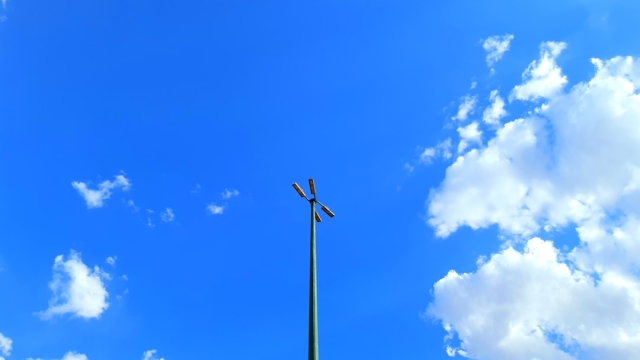Wind energy has emerged as a pivotal component of the renewable energy landscape, contributing significantly to sustainable power generation worldwide. As society increasingly seeks cleaner energy sources, wind farm facilities play an essential role in harnessing the power of wind to generate electricity. These facilities encompass a range of components and infrastructure designed to optimize wind energy production while addressing various operational challenges.
Overview of Wind Farm Facilities: Infrastructure and Components
Wind farm facilities are comprised of several critical elements that work together to convert wind energy into electricity. At the heart of these facilities are the wind turbines, which capture wind movement and transform it into mechanical energy. Each turbine consists of blades, a rotor, and a generator, all of which play a crucial role in energy conversion. Additionally, wind farm facilities include substations that collect and transform the generated electricity to a voltage suitable for transmission. These substations connect to the wider electrical grid, allowing the electricity produced to be distributed to consumers. Proper integration with the grid is vital for maintaining energy reliability and efficiency. Another significant component is the access roads and infrastructure that allow for the transportation and maintenance of both equipment and personnel. This includes welfare solutions, which provide essential services to workers on-site, ensuring their health and safety while they conduct maintenance and operational tasks.
Offshore Wind Projects: Unique Challenges and Solutions
Offshore wind projects present unique challenges compared to their onshore counterparts. The installation logistics are often more complex, as they require specialized vessels and equipment to transport and erect turbines in marine environments. The harsh weather conditions at sea can also complicate construction schedules and maintenance operations. Moreover, environmental considerations are paramount in offshore wind farm facilities. Developers must conduct thorough assessments to understand the potential impacts on marine ecosystems and navigate regulatory requirements. Solutions such as advanced monitoring systems and environmentally friendly installation techniques are employed to mitigate these concerns. Innovative technologies, such as floating wind turbines, offer solutions to some of the spatial limitations associated with traditional offshore installations. These floating designs allow for the harnessing of wind energy in deeper waters, expanding the potential for energy generation while minimizing environmental disruption.
Management and Maintenance of Wind Farm Facilities
Effective management and maintenance practices are essential for the long-term viability of wind farm facilities. Regular inspections and preventive maintenance ensure that turbines operate efficiently and reduce the likelihood of costly repairs. A comprehensive maintenance schedule typically includes checks on mechanical components, electrical systems, and safety features. Utilizing advanced data analytics and monitoring technologies can enhance maintenance strategies by predicting potential failures before they occur. This proactive approach not only improves operational efficiency but also extends the lifespan of equipment. Furthermore, training and welfare for personnel involved in the management and maintenance of wind farm facilities are critical. Providing comprehensive training programs ensures that workers are equipped with the knowledge and skills necessary to perform their duties safely and effectively. Welfare facilities, such as those that provide rest areas and essential services, contribute to a productive workforce.
| Component | Function | Importance |
|---|---|---|
| Wind Turbines | Convert wind energy to electricity | Core energy generation unit |
| Substations | Transform electricity for grid integration | Essential for energy distribution |
| Access Roads | Facilitate transportation and maintenance | Crucial for operational efficiency |
| Welfare Solutions | Support worker health and safety | Enhances workforce productivity |
In summary, wind farm facilities are integral to the global shift toward renewable energy. By understanding the infrastructure involved, addressing the unique challenges of offshore projects, and implementing effective management and maintenance practices, stakeholders can maximize the benefits of wind energy. As the demand for sustainable power continues to grow, the significance of these facilities in the energy sector will only increase.

